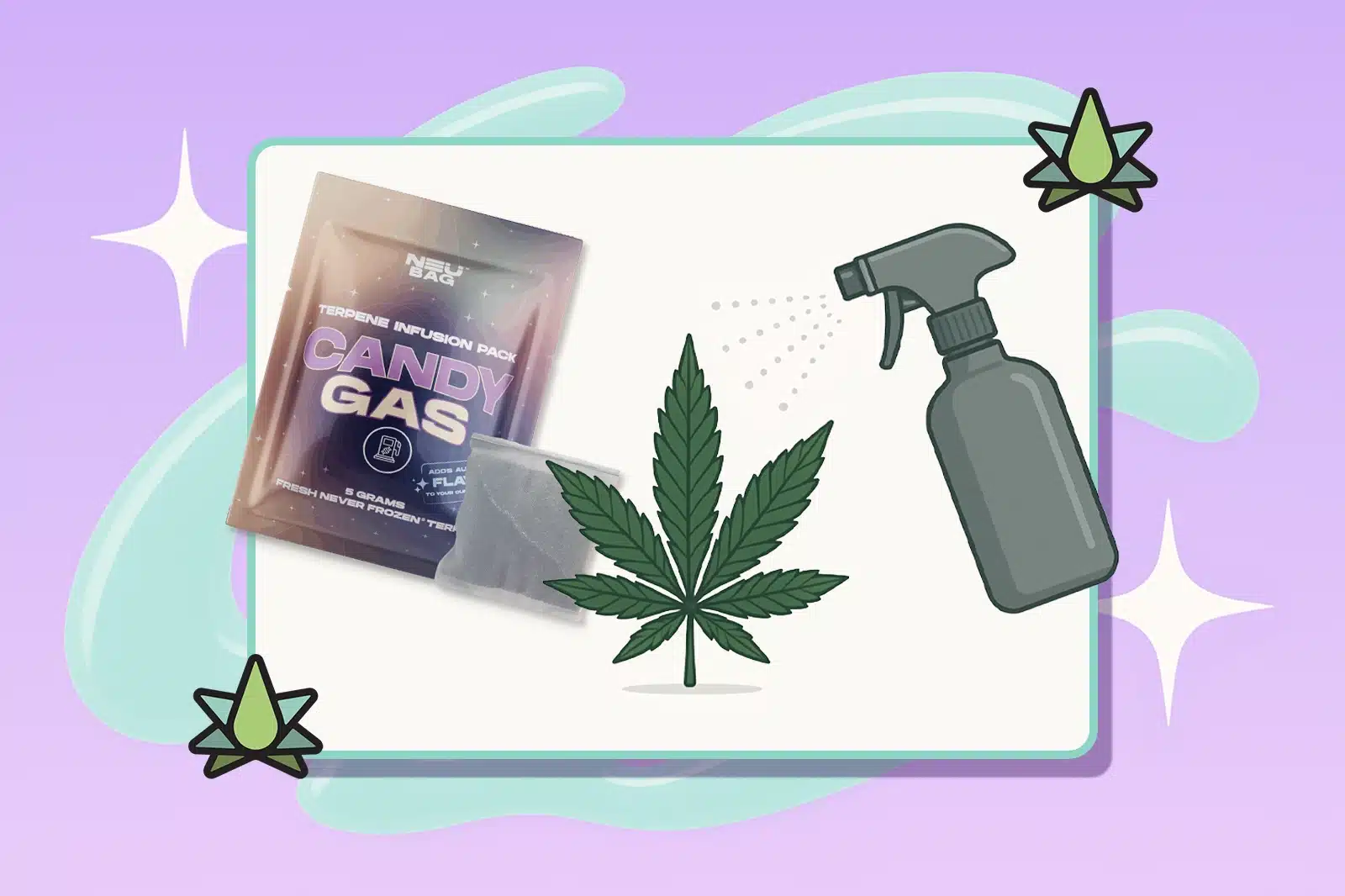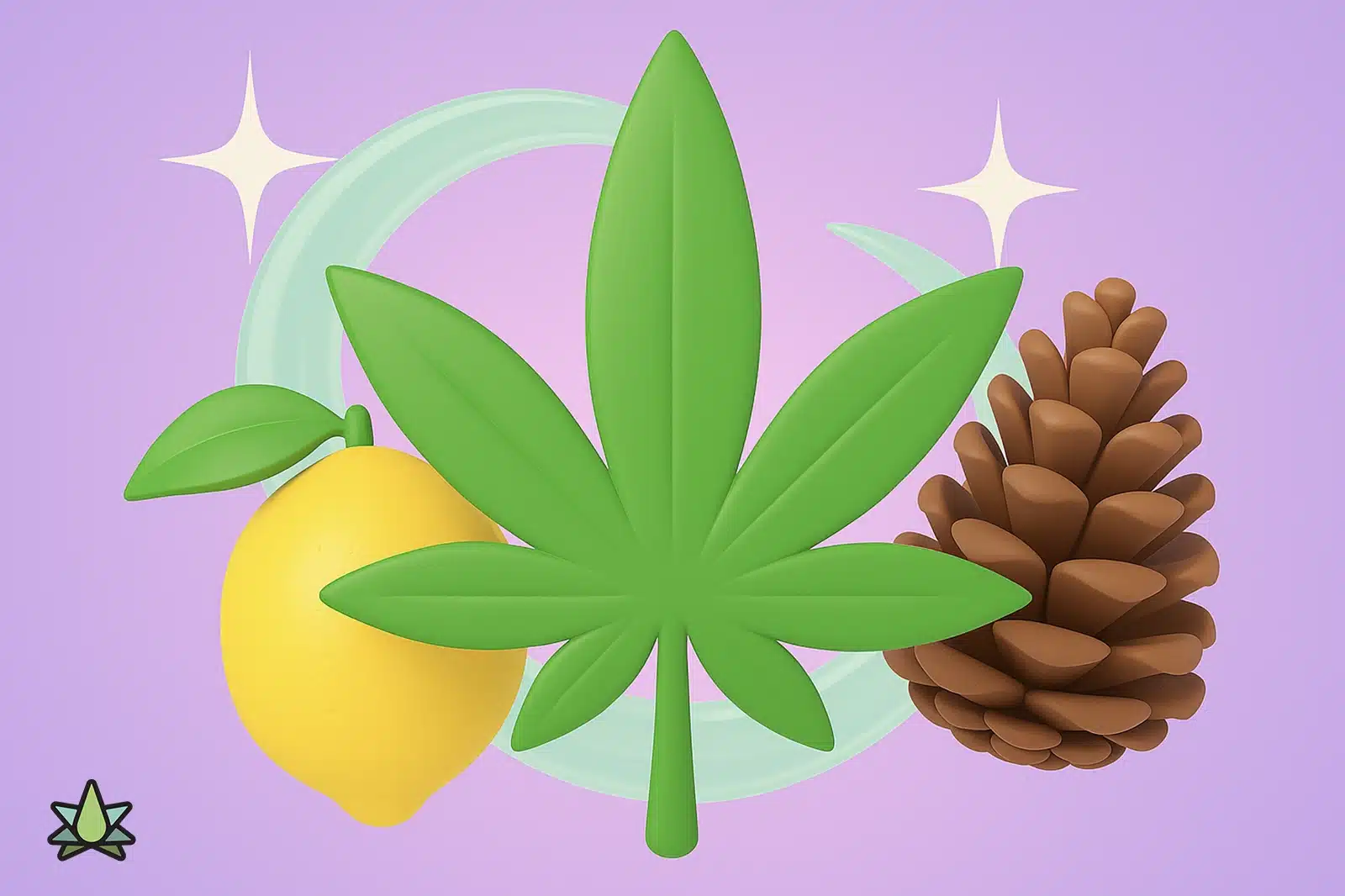Creating the perfect distillate and terpene blend requires precision, proper technique, and an understanding of how these compounds interact at the molecular level. Mastering the art of terpene integration can enhance your product line and improve consumer acceptance.
For product developers and manufacturers working with cannabis distillate, terpene reintroduction represents an opportunity and a challenge. The distillation process strips away the natural terpenes that give cannabis its distinctive flavors and effects, leaving behind a potent but relatively bland concentrate.
By carefully reintroducing terpene profiles, you can recreate unique experiences, enhance product characteristics, and create consistent products that resonate with discerning consumers. This technical process demands attention to detail, proper equipment, and a systematic approach to achieve professional-grade results.
Key Takeaways
- Successful terpene-distillate mixing demands calibrated equipment and strict temperature control to preserve terpene profiles and achieve consistent product quality.
- Using the correct terpene ratios prevents harsh flavors, maintains hardware compatibility, and ensures effective formulation.
- Mixing at 60–65°C reduces distillate viscosity and minimizes terpene evaporation, preserving aroma and effects.
- A structured, step-by-step approach to mixing, followed by analytical and sensory testing, ensures homogeneity, potency, and stability, reducing the risk of separation or degradation over time.
Essential Equipment for Professional Terpene Integration
Proper equipment selection is the foundation of successful terpene and distillate mixing. Professional formulators understand that investing in quality tools improves product consistency and protects the integrity of volatile terpene compounds throughout the mixing process.
Temperature control, precise measurement, and contamination prevention form the three pillars of equipment selection for terpene integration. The core equipment requirements are:
- Calibrated hot plate with magnetic stirring (±1°C accuracy)
- Analytical balance (0.001g precision minimum)
- Glass syringes with blunt-tip needles (1ml, 3ml, 5ml sizes)
- Infrared thermometer or thermocouple probe
- Glass mixing vessels (laboratory-grade borosilicate)
- Magnetic stir bars (PTFE-coated, various sizes)
- Heat-resistant gloves and safety equipment
Hot plates designed for laboratory use provide the temperature stability necessary for consistent results. Unlike basic heating elements, these units maintain precise control essential for terpene preservation.
The integrated magnetic stirrer ensures uniform mixing without introducing air bubbles or requiring manual intervention. For operations processing multiple formulations daily, programmable units with preset temperature profiles increase efficiency while maintaining reproducibility.
Precision is critical when working with concentrated terpene profiles. Even small errors can significantly impact the final product’s flavor, effects, and viscosity. The difference between a harsh, artificial-tasting product and one that delivers an authentic cannabis experience often comes down to the mixing methodology and the quality of your terpene source.
Glass syringes rated for terpene compatibility prevent material degradation and ensure accurate volumetric additions. Many terpenes can interact with certain plastics, potentially introducing unwanted compounds into your formulation, a risk that can be eliminated by using appropriate glass or PTFE-lined equipment.
Calculating Optimal Terpene Ratios
Determining the correct terpene-to-distillate ratio requires balancing multiple factors, including intended product format, desired intensity, and hardware compatibility. Our vape formulation guide provides detailed recommendations for .vapes. Industry standards and technical constraints offer further parameters for effective formulation.
Recommended Terpene Percentages by Application
- Vape Cartridges: 5-10%
- Disposable Vapes: 6-10% (lower for all-in-one systems)
- Tinctures: 1-3% (for flavor enhancement)
- Topicals: 0.5-2% (for aromatic properties)
- Edibles: 0.1-0.5% (heat-stable profiles only)
For vape applications, hardware compatibility is crucial in ratio determination. Ceramic cell cartridges typically handle 8-12% terpene concentrations effectively, while traditional cotton wick systems perform best at 5-8%. The terpene mixing calculator helps determine exact measurements for different batch sizes.
Due to their complex composition, lower concentrations often suffice when working with native cannabis terpenes. These full-spectrum extracts contain minor compounds that enhance perceived intensity through synergistic effects (also theorized as the entourage effect).
Botanical terpene blends may require slightly higher percentages to achieve a comparable sensory impact.
Step-by-Step Mixing Protocol
Executing the mixing process with precision ensures homogeneous distribution of terpenes throughout the distillate while preserving compound integrity. This systematic approach, refined through extensive formulation experience with wholesale partners, produces consistent results across batches.
Pre-Mixing Preparation
- Temperature Equilibration: Allow refrigerated materials to reach room temperature (2-3 hours)
- Equipment Sanitization: Clean all tools with 95% ethanol and allow to dry
- Workspace Preparation: Ensure a clean, level surface away from air currents
- Safety Gear: Don heat-resistant gloves and safety glasses
Begin by weighing your distillate in a glass vessel appropriate for your batch size. Record exact weights for accurate ratio calculations. Precision at this stage prevents costly formulation errors, as our testing protocols show that small variations can impact final products.
Set your hot plate to 60-65°C (140-149°F) and place the distillate container with a magnetic stir bar. This temperature range, validated through extensive testing, reduces viscosity without causing significant terpene evaporation.
Allow 10-15 minutes for complete temperature equilibration before proceeding. Rushing this step often results in uneven mixing and potential hot spots.
With magnetic stirring at medium speed, slowly add terpenes to the center of the vortex over 30-60 seconds. The gradual addition promotes immediate dispersion throughout the warmed distillate.
Continue stirring for 15-20 minutes, monitoring temperature throughout. Our Fresh Never Frozen® terpenes maintain stability throughout this process when proper temperatures are maintained.
Temperature Control Best Practices
Temperature directly impacts product quality and terpene retention. Generally, monoterpenes begin evaporating at temperatures as low as 21°C, with significant losses occurring above 60°C. As such, understanding thermal stability allows optimization for terpene preservation.
Critical Temperature Thresholds
- Monoterpenes (limonene, pinene): Begin evaporating at 50°C
- Sesquiterpenes (caryophyllene): Stable up to 130°C
- Optimal mixing range: 60-70°C
- Maximum safe temperature: 80°C (brief exposure only)
- Storage temperature: 15-20°C
Maintaining temperatures within the optimal range preserves the complete terpene profile while achieving proper viscosity for thorough mixing. The science behind terpene preservation involves understanding individual compound volatility and their interactions within complex profiles.
Advanced formulations often employ stepped temperature protocols based on the specific terpene profiles used. Profiles high in monoterpenes benefit from lower initial temperatures (55-60°C) with brief increases for final homogenization. Sesquiterpene-dominant profiles tolerate slightly higher temperatures throughout the process.
Preventing Common Formulation Errors
Even experienced formulators encounter challenges when mixing distillate and terpenes. Understanding these pitfalls helps ensure consistent outputs while minimizing material waste.
Most Frequent Mixing Errors
- Incomplete Homogenization: Visible streaks or separation after cooling
- Over-Terpenation: Harsh, irritating products that may leak from hardware
- Temperature Damage: Cooked flavors from excessive heat exposure
- Measurement Errors: Incorrect ratios leading to poor performance
- Cross-Contamination: Flavor carryover between batches
Incomplete mixing typically results from insufficient time, inadequate temperature, or adding terpenes to cold distillate. Products showing separation characteristics can be remediated by reheating to 65°C and mixing for an additional 10 minutes. The concentrate formulation guide provides detailed troubleshooting protocols.
Over-terpenation is difficult to correct once it occurs. Therefore, starting with conservative ratios and adjusting upward in subsequent batches prevents this costly error. For potent profiles like our Gas terpenes, begin with 5-6% and increase gradually based on testing feedback.
Quality Validation Methods
Professional formulation encompasses comprehensive quality validation. These testing protocols ensure products meet specifications before reaching consumers. Leading cannabis brands usually implement multi-stage quality checks throughout production.
Analytical testing provides quantitative validation through third-party laboratories. High-performance liquid chromatography (HPLC) confirms cannabinoid potency while gas chromatography-mass spectrometry (GC-MS) verifies terpene profiles.
Comparing pre- and post-formulation results identifies any compounds lost during processing. Retention rates of 90% or higher indicate proper technique.
Sensory evaluation complements analytical data with qualitative assessment. Structured panel testing evaluates aroma intensity, flavor development, vapor smoothness, and overall experience.
Products should deliver consistent sensory characteristics matching the intended profile without harsh or chemical notes. The terpene tasting methodology we’ve developed helps standardize these assessments.
Stability Testing Parameters
- Accelerated Aging: 40°C for 2 weeks simulates 6 months of storage
- Freeze-Thaw Cycles: 3 cycles between -20°C and 25°C
- Light Exposure: UV cabinet testing for photostability
- Real-Time Monitoring: Monthly testing over a 12-month period
Well-formulated products maintain homogeneity and potency throughout testing conditions. Separation, crystallization, or significant terpene loss indicates formulation adjustments are needed.
Storage and Handling Guidelines
Proper storage preserves quality investments in both raw materials and finished products. Environmental control prevents degradation while ensuring consumers receive products at peak quality. Our storage best practices guide provides detailed protocols.
Optimal Storage Conditions
- Temperature: 15-20°C (59-68°F) constant
- Light Exposure: Dark storage or amber containers
- Atmosphere: Minimal headspace, inert gas optional
- Humidity: <60% RH to prevent condensation
- Container Material: Glass or specialized plastics only
Temperature consistency is more critical than absolute cold storage. Repeated temperature cycling causes condensation and accelerates degradation. Professional operations maintain dedicated storage areas with continuous monitoring rather than using shared refrigeration subjected to frequent access.
For operations interested in scaling their formulation capabilities, check out our white-label partnership opportunities to access our complete terpene library.
Scaling From R&D to Production
Transitioning from benchtop to commercial scale introduces variables that impact mixing dynamics and product consistency. The principles remain constant, but execution requires adjustment for larger volumes and different equipment configurations.
Heat transfer efficiency decreases with volume, requiring adjusted equilibration times. For instance, a 100-gram batch reaching the optimal temperature range in 10 minutes may require 45-60 minutes at a 5-kilogram scale.
This extended heating increases evaporation risk unless vessels are properly sealed during warm-up. Therefore, we recommend jacketed vessels with precise temperature control for production-scale operations.
Mixing dynamics also change dramatically between scales. Gentle magnetic stirring, often sufficient for small batches, is inadequate as volumes increase.
Instead, overhead mechanical mixers with appropriate impeller designs ensure thorough homogenization without excessive shear or air incorporation. Power requirements typically follow the cube of the scale-up factor. That is to say, a 10x volume increase requires roughly 1000x mixing power.
Enhance your distillate formulations with authentic, cannabis-derived terpenes. Request terpene sample packs of our premium terpene profiles and experience the difference that quality inputs make in your finished products.
Frequently Asked Questions
What is the Best Temperature for Mixing Terpenes with Distillate?
Maintain 60–65°C (140–149°F) during mixing to lower viscosity for even terpene distribution while preventing significant evaporation of volatile compounds.
How Much Terpene Should I Add to Distillate for Vape Products?
Typically, 5–10% terpenes by weight are used for vape cartridges, with lower ranges for all-in-one devices and higher ranges for systems compatible with higher terpene loads.
How Can I Prevent Separation or Streaking in My Distillate Blends?
Ensure complete temperature equilibration, slow terpene addition with continuous magnetic stirring, and a 15–20 minute mixing window to achieve homogeneity.
Why is Equipment Choice so Important When Mixing Terpenes?
Using calibrated, terpene-compatible glassware and precision tools ensures accurate measurement, prevents contamination or degradation, and preserves the terpene profile during mixing.
Sources Cited
Christensen, C., Rose, M., Cornett, C., & Allesø, M. (2023). Decoding the Postulated Entourage Effect of Medicinal Cannabis: What It Is and What It Isn’t. Biomedicines, 11(8), 2323. https://doi.org/10.3390/biomedicines11082323


